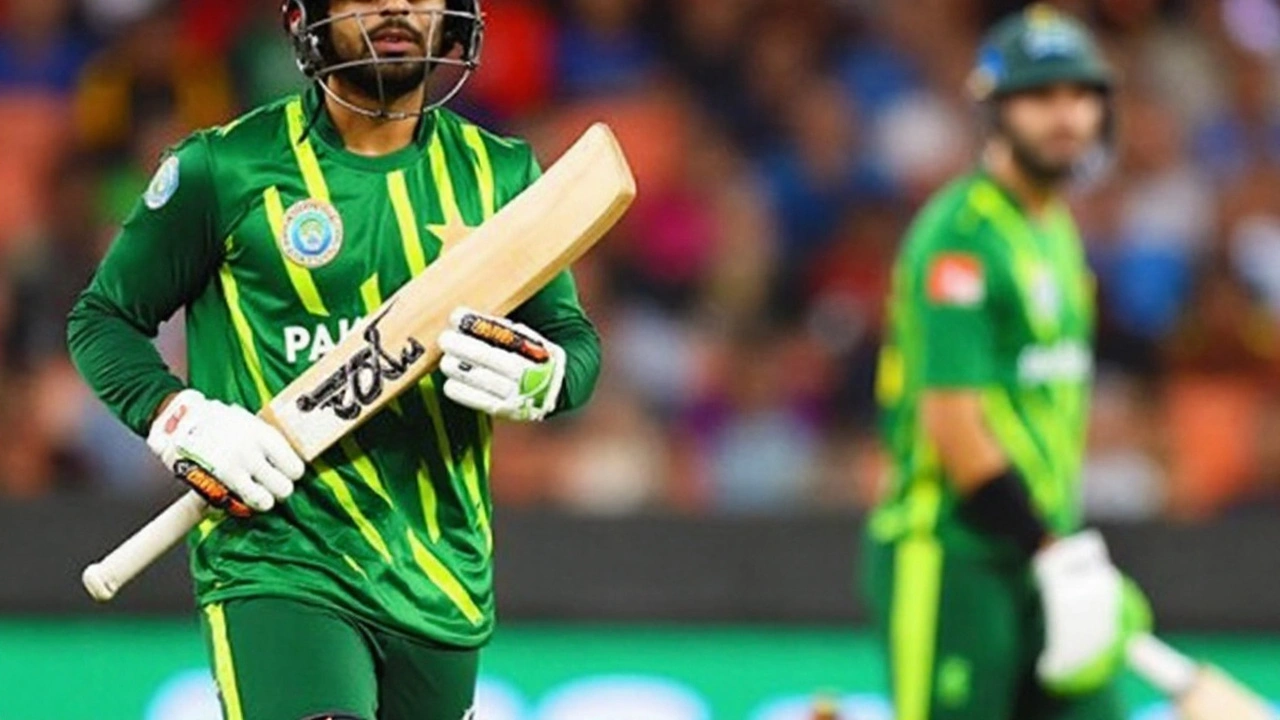Nawaz’s warning, Pakistan’s revival, and a final dripping with history
A week ago, Pakistan were staring at the exit. Now they walk into the Melbourne Cricket Ground with a shot at the title and a spin duo keen to set the tone. All-rounder Mohammad Nawaz has put England on notice, saying he and Shadab Khan plan to make life uncomfortable for England’s top order in the T20 World Cup 2022 final on Sunday, 13 November.
Nawaz’s confidence isn’t bluster without backing. He has quietly stitched together clutch cameos with bat and ball since the Asia Cup and carried that edge into Australia. In New Zealand last month, he iced a tri-series final with an unbeaten 38 off 22, a reminder that he can finish games and break them open. Shadab, Pakistan’s vice-captain, has been their pulse in this tournament — brisk leg-spin, sharp fielding, and momentum-changing bursts. His 50 against South Africa and wickets in the middle overs flipped Pakistan’s Super 12 campaign from fragile to fierce.
That revival needed help. Pakistan lost to India in a last-ball classic at the MCG and then slipped against Zimbabwe in Perth. It took the Netherlands shocking South Africa to reopen the group. Pakistan did their part, beating Bangladesh to sneak into the semifinals, then bossing New Zealand at the SCG. Babar Azam and Mohammad Rizwan both hit fifties, the chase was ice-cold, and Pakistan looked like the composed side they were tipped to be at the start.
England arrive with their own wave. After a rain-hit, DLS loss to Ireland in Melbourne, they regrouped. Against India in the semifinal, Jos Buttler and Alex Hales put on a ruthless 170-run opening stand in 16 overs — a statement win that stripped away doubt. It also underlined the template: explosive powerplay batting, pace supported by smart variations, and a rejuvenated Adil Rashid controlling the middle with leg-spin.
There’s history humming in the background too. The MCG is where Pakistan beat England in the 1992 ODI World Cup final. Thirty years on, the cast has changed, the format is faster, but the symbolism remains — Pakistan’s belief grows at this ground; England see a chance to settle an old score and claim a second T20 crown after 2010.
England aren’t dismissing Pakistan’s surge. Joe Root, watching from outside the squad, called Pakistan “very dangerous,” pointing to a bowling unit that can squeeze and strike. Buttler, for his part, says England are “incredibly dangerous” when they set the tempo. Both views are true. The final may come down to who wins the first six overs — and who handles the nerves when the rain radar turns ugly.

Tactical battles, team calls, and the weather wildcard
Expect a series of mini-duels. Shadab vs Hales in the middle overs. Shaheen Shah Afridi vs Buttler with the new ball. Adil Rashid vs Babar and Rizwan’s low-risk approach. And Sam Curran’s left-arm angles at the death against Pakistan’s late hitters. Each of these contests can tilt the game within a handful of balls.
- Powerplay punch: Afridi has set early traps with late swing. If he pins Buttler or Hales in the first two overs, England’s tone changes. Flip it, and England at 50-plus in the powerplay drags Pakistan’s spinners off their ideal lines.
- Spin in the middle: Shadab and Nawaz thrive on big square boundaries at the MCG. England’s hitters will try to hit straighter and sweep less across the line. Rashid’s googly has returned to rhythm; Pakistan’s top order may have to take more singles than usual.
- Death overs: Curran has been England’s standout bowler of the tournament, especially at the back end. Pakistan will counter with Haris Rauf’s pace and Yorkers, and Mohammad Wasim Jr’s heavy length if he plays.
The ground matters. The MCG’s wide square boundaries reward placement and running more than pure muscle. Seamers get bounce with the new ball; spinners enjoy protection once the ball softens. Pakistan’s balance — three quicks plus two spinners — suits this surface if the game isn’t shortened. England’s flexibility — batting depth to No. 8 and a mix of seam and spin — suits any scenario, including a shootout.
Team news carries weight. England have monitored Dawid Malan (groin) and Mark Wood (hip stiffness). Phil Salt covered for Malan in the semifinal, and Chris Jordan stepped in for Wood and delivered at the death. If Wood is fit, England gain raw pace; if not, Jordan’s control and experience keep the attack steady. Pakistan look settled: Babar and Rizwan at the top, the in-form Mohammad Haris adding spark in the middle, Iftikhar Ahmed as the power option, then Shadab and Nawaz to bridge bat and ball, backed by Afridi, Rauf, and Naseem Shah.
Recent form between these sides is fresh. Just weeks ago, England edged a seven-match T20I series in Pakistan 4-3. That set was a crash course in each other’s plans: Pakistan’s conservative starts versus England’s high-risk, high-reward powerplays; Pakistan’s spinners choking the middle; England’s lower order hitting deep. Both camps learned plenty, and little is likely to surprise on Sunday.
Weather may have the loudest say. The forecast for Melbourne is grim, with heavy showers and thunderstorms in the frame. There is a reserve day on Monday. If the final starts on Sunday and cannot finish, it will resume from the point of interruption. For knockouts, a minimum of 10 overs per side is needed for a result. If that can’t be achieved across both days, the trophy will be shared. That makes the toss and bowling first even more valuable if rain lurks — chasing under DLS often gives the side batting second a clearer target.
England’s path to this stage has highlighted specific roles. Curran set the tone early in the tournament with a five-for against Afghanistan and has owned the death overs. Woakes has handled the new ball, with Stokes acting as the glue with bat and ball when needed. Rashid, after a quiet start, found his groove with flight and dip, starving set batters of boundaries. Buttler’s form has sharpened with time in the middle, and Hales, recalled this year, looks at ease against pace and spin after a strong run in leagues worldwide.
Pakistan’s strength comes from old-school rhythm with modern tweaks. Babar and Rizwan prefer a measured start, trusting their bowlers to keep targets in check. The pivot has been Shadab’s aggression and Haris’s fearless batting — they have pushed totals 15–20 runs higher than Pakistan were managing earlier in the year. With the ball, Afridi’s swing up front and Rauf’s pace at the MCG (his BBL home ground) are major weapons. Nawaz’s ability to bowl into the pitch with variation and then chip in with a 20-ball 30 gives Babar a match-up tool and a buffer.
There’s also the mental game. England are used to playing under lights at the MCG but carry the memory of a DLS loss here to Ireland — a reminder not to let the weather dictate tempo. Pakistan return to the ground where they were burned by Virat Kohli in a classic chase, and that night could be fuel for a tighter last five overs. Both sides will talk about “sticking to plans.” The real test is how quickly they adapt when a plan fails — when a bowler misses length for 10 minutes, or a batter faces three dots in a row with the radar flashing.
One subplot is England’s middle order. If Pakistan break the opening stand early, the job falls to Stokes, Brook, and Moeen to navigate Shadab and Nawaz while keeping the rate in check. For Pakistan, the question is finishing power: can Iftikhar or Shan Masood clear the rope at the death if the openers bat deep but not fast? Every selection choice hints at those answers.
Strip away the noise and the final looks simple. Pakistan want early wickets, control through spin, and a target in the 160s. England want a fast start, a surge around overs 7–12, and their finishers to bat with a cushion. If rain trims overs, expect higher risk, earlier — pinch-hits up top, and spinners used in the powerplay to rush decisions.
Thirty years after Imran Khan’s cornered tigers roared at the MCG, the echo is impossible to miss. Pakistan have already lived an entire tournament in fast-forward — despair, hope, and a surge. England have played like a team that knows the window is now. Add in Nawaz’s warning, Shadab’s spark, and a weather forecast with a mind of its own, and the last match of this World Cup promises edge from ball one.



